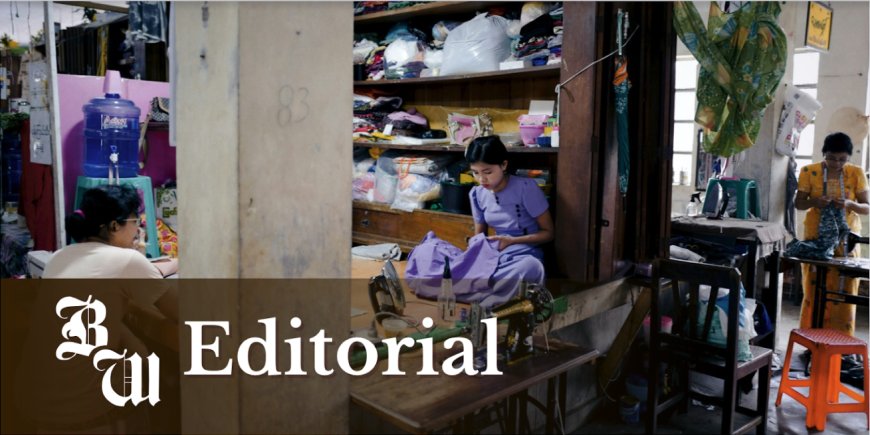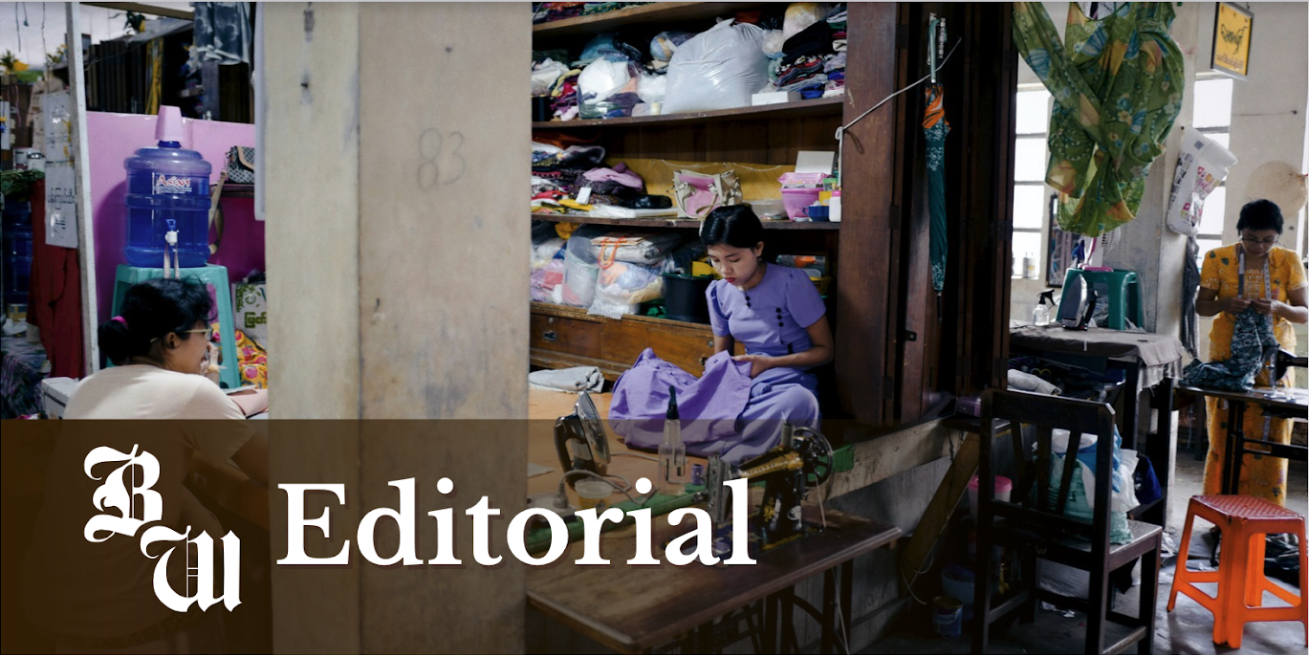Editorial: Can Nickelodeon teach us to protect child labor laws? – The Brown and White
Editorial: Can Nickelodeon teach us to protect child labor laws? The Brown and White

The Impact of Weak Child Labor Regulation on Children’s Rights

Introduction
The new “Quiet on Set” docuseries has gained significant popularity in recent weeks, becoming the most streamed TV series on both MAX and Prime Video.
Exploring Child Labor Law Violations and Abuse in the Entertainment Industry
The five-part series delves into the child labor law violations, toxic work conditions, and sexual abuse scandals that occurred on several Nickelodeon shows produced by Dan Schneider from the early 2000s to the 2010s.
Through interviews with child actors who worked on shows like “Drake and Josh,” “All That,” and “The Amanda Show,” it was revealed how the lack of enforcement of child labor laws and inadequate oversight from network executives allowed Schneider to create an unhealthy work environment.
Under Schneider’s leadership, these actors were subjected to longer working hours than legally allowed for minors, humiliating and sometimes traumatizing “On-Air Dares,” subtle sexual jokes on camera, and even performing massages for Schneider on set.
The Need for Strong Child Labor Regulation
The harrowing stories of child actors being exploited in the entertainment industry are not new, but “Quiet on Set” sheds light on the experiences of the actors we grew up watching, emphasizing the urgency for stricter child labor regulation.
Furthermore, there is a growing movement among some Republican politicians to loosen statewide child labor laws and deviate from the federal Fair Labor Standards Act, which currently regulates child labor in America.
We believe that “Quiet on Set” should serve as a warning to young voters about the dangers of weak child labor regulation and the rampant abuse of child workers.
The Sustainable Development Goals (SDGs)
It is crucial to align efforts to strengthen child labor regulation with the Sustainable Development Goals (SDGs) set by the United Nations. The SDGs aim to ensure inclusive and equitable quality education (SDG 4), promote decent work and economic growth (SDG 8), and protect children from exploitation and abuse (SDG 16).
The Pitfalls of Weakening Child Labor Laws
Over the past three years, 12 states have enacted bills intended to weaken child labor laws, while a total of 28 states have introduced similar bills. These legislative changes often eliminate the need for government-approved working permits for children under 16, extend working hours (including school nights), or allow children to work in previously deemed unsafe jobs or operate machinery.
The rationale behind these changes is to develop useful skills in the workforce, fill gaps in a struggling labor market, and give parents more control over their children’s employment. However, these bills overlook the importance of government regulations in protecting children and prioritize their economic value over their safety.
The Role of Parental Control and Trust
Parents cannot always be trusted to prioritize their child’s best interests when making decisions about their employment. “Quiet on Set” includes interviews with parents of child actors who chose to remain silent about the labor law violations at Nickelodeon in hopes of advancing their child’s career. This highlights the need for federal restrictions to ensure the protection of children.
The Impact on Children’s Well-being
By prioritizing the child’s role as a worker and their value to the workforce over their protection, these weakened child labor laws increase the risk of work-related injuries and subject children to unhealthy work conditions.
“Quiet on Set” serves as a reminder that structures must be in place to prevent children from being overworked, allowing them to lead fulfilling lives and pursue successful careers.
Alternative Solutions
Rather than allowing children to work longer hours and potentially jeopardize their safety and education, alternative solutions such as increasing welfare or expanding safety net programs should be considered.
Conclusion
The movement to weaken child labor laws is spreading across the country, with states like New Jersey and Ohio already enacting such legislation. It is crucial to view the stories presented in “Quiet on Set” as a warning of the pain and trauma that can result from weak child labor regulation. The protection of children should always be the top priority in child labor legislation.
SDGs, Targets, and Indicators Analysis
1. Which SDGs are addressed or connected to the issues highlighted in the article?
- SDG 4: Quality Education – The article discusses child labor and its impact on the education and well-being of children.
- SDG 8: Decent Work and Economic Growth – The article highlights the violations of child labor laws and the need for regulations to protect child workers.
- SDG 10: Reduced Inequalities – The article emphasizes the importance of protecting children from abuse and exploitation in the entertainment industry.
- SDG 16: Peace, Justice, and Strong Institutions – The article mentions the lax enforcement of child labor laws and the need for stronger regulations to prevent abuse.
2. What specific targets under those SDGs can be identified based on the article’s content?
- SDG 4.4: By 2030, substantially increase the number of youth and adults who have relevant skills, including technical and vocational skills, for employment, decent jobs, and entrepreneurship.
- SDG 8.7: Take immediate and effective measures to eradicate forced labor, end modern slavery and human trafficking, and secure the prohibition and elimination of the worst forms of child labor.
- SDG 10.2: By 2030, empower and promote the social, economic, and political inclusion of all, irrespective of age, sex, disability, race, ethnicity, origin, religion, or economic or other status.
- SDG 16.2: End abuse, exploitation, trafficking, and all forms of violence against and torture of children.
3. Are there any indicators mentioned or implied in the article that can be used to measure progress towards the identified targets?
- Indicator for SDG 4.4: Proportion of youth and adults with information and communications technology (ICT) skills, by type of skill.
- Indicator for SDG 8.7: Proportion and number of children aged 5-17 years engaged in child labor, by sex and age group.
- Indicator for SDG 10.2: Proportion of children aged 5-17 years engaged in child labor, by sex and age group.
- Indicator for SDG 16.2: Number of victims of human trafficking per 100,000 population, by sex, age group, and form of exploitation.
SDGs, Targets, and Indicators Table
| SDGs | Targets | Indicators |
|---|---|---|
| SDG 4: Quality Education | Target 4.4: By 2030, substantially increase the number of youth and adults who have relevant skills, including technical and vocational skills, for employment, decent jobs, and entrepreneurship. | Indicator: Proportion of youth and adults with information and communications technology (ICT) skills, by type of skill. |
| SDG 8: Decent Work and Economic Growth | Target 8.7: Take immediate and effective measures to eradicate forced labor, end modern slavery and human trafficking, and secure the prohibition and elimination of the worst forms of child labor. | Indicator: Proportion and number of children aged 5-17 years engaged in child labor, by sex and age group. |
| SDG 10: Reduced Inequalities | Target 10.2: By 2030, empower and promote the social, economic, and political inclusion of all, irrespective of age, sex, disability, race, ethnicity, origin, religion, or economic or other status. | Indicator: Proportion of children aged 5-17 years engaged in child labor, by sex and age group. |
| SDG 16: Peace, Justice, and Strong Institutions | Target 16.2: End abuse, exploitation, trafficking, and all forms of violence against and torture of children. | Indicator: Number of victims of human trafficking per 100,000 population, by sex, age group, and form of exploitation. |
Behold! This splendid article springs forth from the wellspring of knowledge, shaped by a wondrous proprietary AI technology that delved into a vast ocean of data, illuminating the path towards the Sustainable Development Goals. Remember that all rights are reserved by SDG Investors LLC, empowering us to champion progress together.
Source: thebrownandwhite.com

Join us, as fellow seekers of change, on a transformative journey at https://sdgtalks.ai/welcome, where you can become a member and actively contribute to shaping a brighter future.







